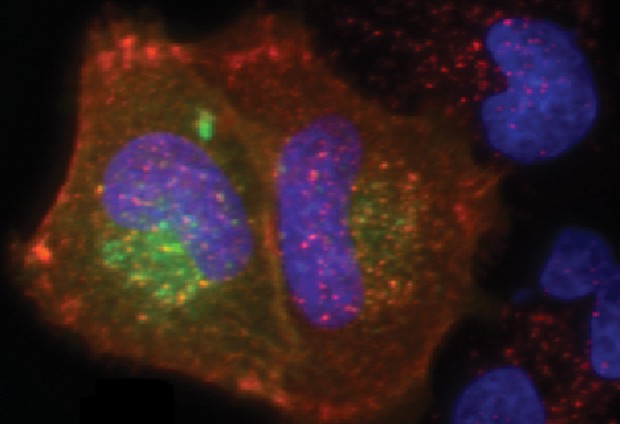
Beyond sequencing
Human geneticists and cell biologists in Heidelberg have gone beyond vague links between genes and disease to pinpoint cause and effect, in a study they see as both a poster-child for cross-discipline collaboration and a call for caution.

A new microscopy-based approach takes scientists a step beyond gene sequencing studies, enabling them to pinpoint which rare genetic variants – chunks of DNA which have a slightly different sequence in a few people – cause a disease. The method also allows researchers to draw meaningful conclusions already at smaller sample sizes, which is especially important in the context of diseases where it is difficult to simply find enough patients to run a sufficiently powerful study.
it can be very difficult to make a diagnosis based on DNA sequence alone
“I’ve been working in diagnosing genetic diseases for many years, and very often we use sequencing. However, without a biochemical test or very clear clinical conviction it can be very difficult to make a diagnosis based on DNA sequence alone,” says Heiko Runz. A human geneticist, Runz teamed up with Rainer Pepperkok from EMBL Heidelberg in the Molecular Medicine Partnership Unit of EMBL and Heidelberg University Clinic, to tackle the issue.
Together with researchers at the Broad Institute of MIT and Harvard, the team analysed data from 3000 people in Italy, half of which had suffered heart attacks before the age of 45. Heart attacks at such a young age are very rare, so it is likely that many of these patients have rare disorders that predispose them to heart disease. The scientists focused on one gene in particular: LDLR. Previous studies had linked multiple different changes in this gene to familial hypercholesterolemia – a rare, inherited disorder that can lead to high levels of cholesterol in the blood. But there was no easy way to tell which of those many changes, or variants, really caused the condition.
This approach allows us to narrow down genetic results from mere associations to verifiable cause-and-effect
Scientists knew that cells whose LDLR doesn’t work properly take up less cholesterol, leaving more cholesterol in a person’s blood vessels, and thereby increasing the risk of atherosclerosis and heart attacks. Pepperkok – who alongside running his own lab also leads EMBL’s Advanced Light Microscopy Facility and is Head of Core Facilities – helped to engineer cells to carry the different versions of LDLR that had been observed in the Italian patients. He and and his team then developed an automated microscopy analysis to see which of those cells slowed their cholesterol uptake. The upshot: only 14 of the 70 variants found through sequencing had a visible impact on cells’ ability to take up cholesterol.

“To some extent, this study is a call for caution,” says Pepperkok: “everyone is very excited about the power of new sequencing technologies, but there is a risk of over-stating the results, because you find so many variants that are just not relevant.”
Pepperkok and Runz hope the work will inspire other geneticists and cell biologists to join forces. The new method developed through their own collaboration is widely applicable. It could be used to help untangle the genetics of virtually any condition where scientists know of an effect on cells that can be observed and quantified under the microscope. “This approach could prove very important to complement and thus improve the interpretation of genetic studies,” says Pepperkok, “it allows us to narrow down genetic results from mere associations to verifiable cause-and-effect.”
Aside from the doors it opens to understand the links between genes and disease in general, the study could have direct implications for those Italian patients. On the one hand, for patients who carry LDLR variants that seem not to have a great impact on cholesterol uptake, it may be worth looking for other potential heart attack triggers. And for patients who have variants that do cause problems in cholesterol uptake, this is confirmation that their condition is hereditary – and could therefore impact their family. Runz points out that if patients know that their condition has a genetic root, this often increases the likelihood that they will follow their treatment regimes and motivates them for necessary lifestyle changes.
“We are in direct contact with the physicians, who can decide if and how to best share the new information with patients,” says Runz, who recently moved to Merck Research Labs in Boston, USA, “and we’re also discussing follow-up studies to further improve our understanding – and patient outcomes.”


